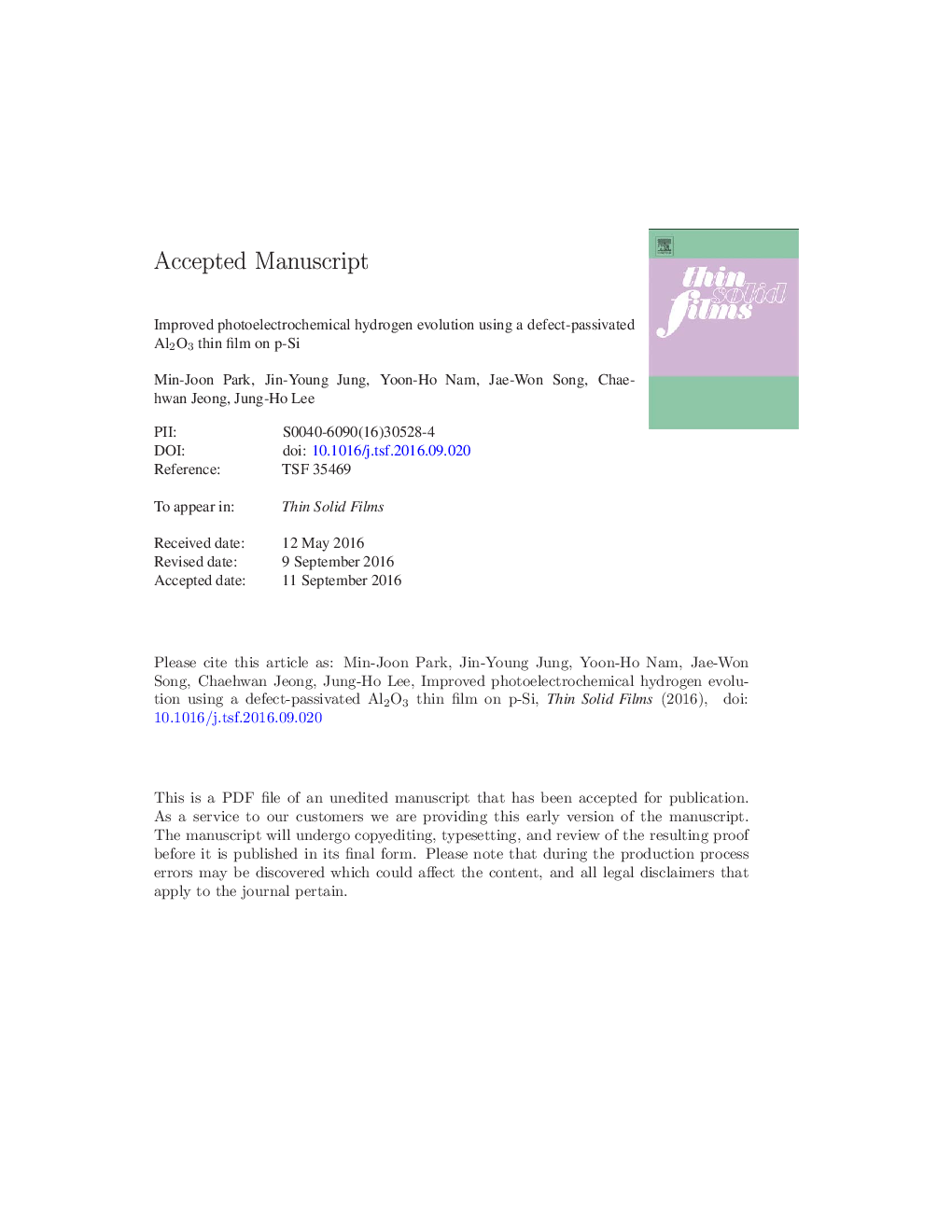| Article ID | Journal | Published Year | Pages | File Type |
|---|---|---|---|---|
| 8033481 | Thin Solid Films | 2016 | 20 Pages |
Abstract
A large amount of external overpotential is normally required to split water using p-type silicon (p-Si) due to the insufficient driving force between the conduction band-edge and the hydrogen evolution level. We demonstrate how inserting an Al2O3 interlayer between p-Si and the electrolyte mitigates the requirement of overpotentials. Since the Al2O3 film decreased the number of interface defect states, electrons were observed to migrate into the Si surface so that negative charges accumulated at the band-edge of silicon. This resulted in band bending enhancement and a reduction of the overpotential requirement. In our result, the overpotential of ~Â 150Â mV was reduced at a current density of 20Â mA/cm2, and the onset voltage of ~Â 70Â mV was also reduced at the 1.4Â nm thickness of Al2O3 interlayer.
Related Topics
Physical Sciences and Engineering
Materials Science
Nanotechnology
Authors
Min-Joon Park, Jin-Young Jung, Yoon-Ho Nam, Jae-Won Song, Chaehwan Jeong, Jung-Ho Lee,
